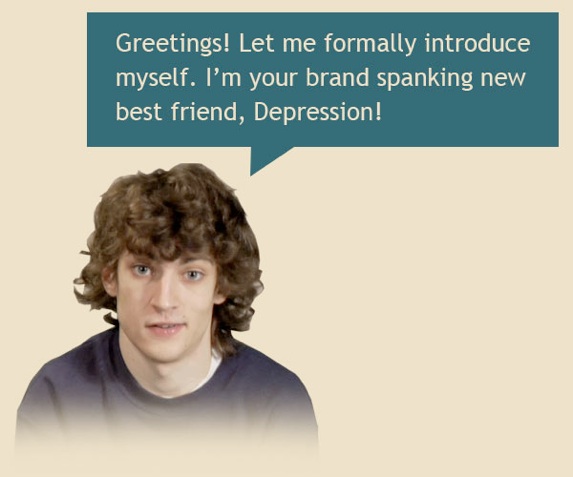Latest Public Service Radio Minute
Loss of EmploymentLoss of Employment, MP3, 1.3MB
Listen to or download all our PSAsSupport Our Work
Please donate so we can continue our work to reduce the stigma of psychiatric illness, encourage research, and support educational activities for behavioral health professionals and the public. Ways you can donate and help are on our Support and Donations page. Thank you!
More InfoLatest News Around the Web
Number Of Patients With Dementia Will Likely Double In Europe By 2050, Report Finds
Healio (2/24, Gramigna) reports, “The number of patients with dementia will likely double in Europe by 2050…a recent report by Alzheimer Europe” concludes. For that report, investigators “based their findings on a collaborative analysis of prevalence studies published after the conclusion of Alzheimer Europe’s previous project conducted between 2006 and 2008 and called the European Collaboration on Dementia.” In their report, “researchers noted the number of people within the European Union with dementia will double from the current estimate of 7,853,705 to 14,298,671 by 2050.”
Related Links:
— “Dementia rates set to double in Europe by 2050, echoing US estimates, “Joe Gramigna, Healio, February 24, 2020
Video Game-Like Intervention Improves Symptoms Among Adolescents With AD/HD, Study Suggests
MedPage Today (2/24, Hlavinka) reports that research indicated “spending 25 minutes a day with a video game-like intervention improved symptoms among adolescents with attention deficit-hyperactivity disorder (AD/HD).” Researchers found that “among 348 adolescents, those assigned to the intervention – which involved a gaming therapy designed to improve attention and multitasking – had small but significant improvements in Test of Variables of Attention-Attention Performance Index (TOVA-API) scores at 4 weeks compared with a control group that played a similar game targeting other, non-AD/HD-related cognitive domains.” But, “patients in the intervention arm did not show significantly improved scores on parent and clinician ratings of AD/HD symptoms and functional impairment versus the control group.” The findings were published in the Lancet Digital Health.
Related Links:
— MedPage Today (requires login and subscription)
Just 40.2% Of Individuals Seen In ED For Mental Health-Related Issue Had Follow-Up Visit With Physician Within Two Weeks Of Discharge, Researchers Say
Psychiatric News (2/24) reports, “Less than half of individuals who were seen in an emergency department (ED) in Ontario for a mental health–related issue had a follow-up visit with a physician within two weeks after discharge,” research indicated. What’s more, people “who had a substance use disorder were even less likely to have a follow-up visit with a physician during this period compared with those who did not have a substance use disorder, the study found.” Of the 143,662 adults included in the study, just “40.2% had a follow-up mental health visit within 14 days of ED discharge.” The findings were published online Feb. 24 in Psychiatric Services, a publication of the American Psychiatric Association.
Related Links:
— “Most Emergency Department Patients With Mental Health Problems Don’t Receive Timely Follow-up Care, Psychiatric News , February 24, 2020
New York Court Weighs Dropping Question About Mental Health Treatment From Application To The Bar
CNN (2/23, Holcombe) reports, “For decades, nearly every state has required law students to answer questions about their mental health treatment as part of the requirements before they can practice law,” and consequently, “according to one study, 45% of law students said they would be discouraged from seeking mental health treatment for fear that it would negatively affect bar admission.” Currently, New York, along with “38 other states,” has “questions regarding mental health on their character and fitness evaluations, according to the latest data from the American Bar Association Commission on Disability Rights.” Now, however, “a New York court is weighing whether to drop the question from the state’s bar application after a working group within the New York State Bar Association issued a report (PDF) in August calling for the removal of any questions about ‘mental history, diagnoses, or treatment.’” That report deemed “such questions…’unnecessary and ineffective in identifying applicants who are unfit and are likely to deter individuals from seeking mental health counseling and treatment.’”
Related Links:
— “Law students say they don’t get mental health treatment for fear it will keep them from becoming lawyers. Some states are trying to change that, ” Madeline Holcombe, CNN, February 23, 2020
Trump Administration Drops Appeal, Agrees To Provide Mental Healthcare To Separated Immigrant Families
The San Francisco Chronicle (2/21, Egelko) reported “the Trump administration dropped its appeal of” US District Judge John Kronstadt’s “order Friday and agreed to provide mental health care to thousands of immigrant parents and children who were separated at the Mexican border by the administration’s ‘zero tolerance’ policy.” Kronstadt “of Los Angeles issued the injunction in November requiring the government to promptly provide mental health screenings for the parents and their families, and treatment for those who needed it,” and “said there was evidence that the family separations caused ‘severe mental trauma to parents and their children’ and that administration officials had been ‘deliberately indifferent to the mental health risks’ of their policy.”
Related Links:
— “Trump lawyers drop appeal — separated immigrant families to get mental health care, “Bob Egelko, The San Francisco Chronicle, February 21, 2020
Foundation News
Nothing Found
It seems we can’t find what you’re looking for. Perhaps searching can help.

